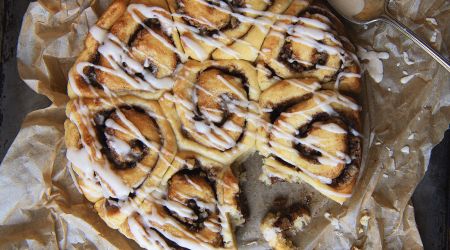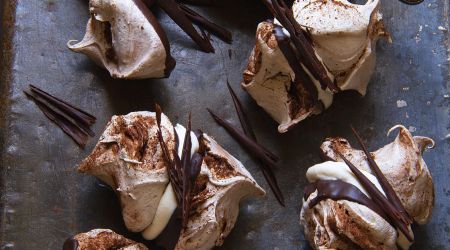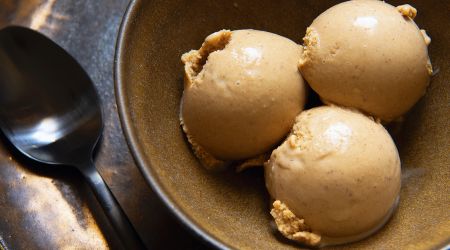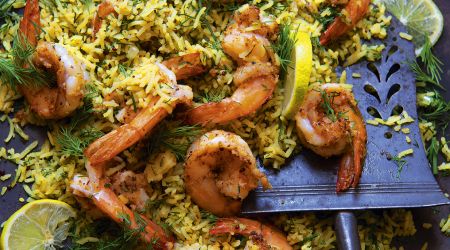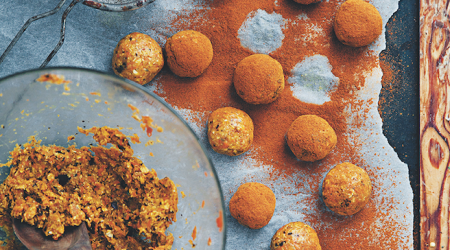Cinnamon
An antidote to the colder, darker months, cinnamon's rich, warming properties have made it a kitchen essential for millennia, the spice bringing a taste of tropical shores to both sweet and savoury dishes. Clarissa Hyman embraces the season
What is it?
Cinnamon and cassia are cousins, each the product of the dried
bark of two closely related trees of the laurel family. Like all families,
though, they have their similarities and differences, although
cinnamon perhaps has the status of the favoured child. They were
both among the first spices sought and valued during the global
colonial explorations of the 15th and 16th centuries.
The origins
Originating in Sri Lanka, the cinnamon tree’s value lies in its smooth, thin and brittle bark. The cured and curled ‘quills’ are rolled daily by hand until dry. Broken quills are called quillings and often these smaller pieces are rolled inside larger quills.
The trees were first cultivated by the Dutch occupiers who had
found them in the wild. The Dutch retained monopoly of the trade
until the English East India Company took control. Soon the plants
were taken to Java, India and the Seychelles and, although they
are now grown in many tropical climates, cinnamon from Sri Lanka
is still regarded as being the best quality.
The origins of cassia can be traced even further back, to Assam and Myanmar (then Burma). It is recorded as having been used in a Chinese herbal application in 2700BC and in the Bible as one of the spices with which Moses was commanded to anoint the tabernacle. It is sometimes known as Chinese, ‘false’ or ‘bastard’ cinnamon. Most cassia is exported from southern China and Vietnam: the northern regions of the latter are said to produce the finest.
Tasting notes
The vagaries of labelling and the way the two spices are sometimes treated as interchangeable can bring understandable confusion to the consumer. In French, for example, the single word ‘cannelle’ applies to both, and in the USA the term 'cinnamon' can legally be applied to cheaper cassia bark.
Cinnamon has a pale, tan colour that, when ground, according to spice expert Jill Norman, has an agreeably sweet and woody aroma and a fragrant, warm taste. The paler, the finer the quality, and the more immediate the aroma. The long, slender quills tend to hide their aromatic properties until broken or cooked in a liquid.
By contrast, cassia is red-brown, thicker and coarser, with more of an astringent edge and slightly pungent aroma, which makes it better suited to savoury dishes. It is one of the essential constituents of five-spice powder but is also added whole to braised dishes and spicy sauces. The bark, however, is so hard it is usually only ground commercially. Cassia buds are the dried unripe fruits and are used to give a musky character to pickles in the Far East.
Any benefits?
Cinnamon is rich in antioxidants and said to help lower blood sugar
levels and cut the risk of heart disease. Cassia is taken as a tonic
and the essential oil can be used in inhalations to ease head colds.
It is also said to be effective as a treatment for nausea and stomach
problems. However, note that while both are safe to eat in small
to moderate amounts, too much can cause health problems. Both
cinnamon and cassia are used in making incense and pomanders.
Cinnamon is suited to both sweet and savoury dishes, and is particularly good in Moroccan lamb tagines and Iranian stews; in rice dishes and stuffings; fruit desserts, especially apple, banana, pear and apricot; cakes and drinks. It gives a comforting flavour to tea breads, and cinnamon toast is a delicious, neglected teatime treat. Elizabeth David pointed out that in England silver casters were often intended to be filled with cinnamon, not sugar, to be sprinkled on toast and muffins. It adds warm notes to ale and wine, and is a go-to spice for mulled wine. Mexico is the main importer of cinnamon and it is an everyday spice to flavour coffee and chocolate drinks. Cassia is used in spice blends for baking and in curries and pilaffs. Its pungency is suited to rich meats such as duck or pork. It goes well with squash, barley, couscous, lentils and beans.
Quick tips
Sprinkle on top of milky puddings, porridge, pancakes and drinks; combine with a custard or chocolate cake mixture; add a pinch to a pastry glaze; mix with cream cheese for icing on carrot cake. Or whip up a cinnamon rum butter. Glaze popcorn with brown sugar and cinnamon. Spice up baked Bramleys with prunes, cinnamon and ginger. Flavour poached pears in red wine with quills. Pop one also in a hot toddy. Ready-ground cinnamon doesn’t retain its fresh, warm spicy aroma for long, so store the sticks in an airtight container and grind them when needed.
How to showcase it
Cinnamon rolls are here to stay: at their best, they are lighter than you might imagine and incredibly moreish. Tom Kerridge has an irresistible recipe for a frozen caramelised apple parfait with cinnamon toffee sauce, as well as one for orchard fruit and cider tatin with cinnamon cream. And for a German-accented Christmas, make chewy, crisp ’zimsterne’, cinnamon star-shaped cookies. Savoury centrepieces might include cinnamon-rubbed salmon with couscous or slow-braised lamb with cinnamon, fennel and citrus. Finish your meal with a chai latte spiked with cinnamon and cardamon or a festive coffee enhanced with cinnamon, nutmeg, cloves and orange zest. Perfect, too, for Christmas morning.
Anything else?
Fantastic stories surround the history of cinnamon. Cinnamon sticks were said to have been used by huge birds in Arabia for building clifftop nests. According to The Oxford Companion to Food, this highly improbable legend described how the spice was gathered by tempting the birds into flying back to their nests with pieces so heavy that their nests would then collapse and its constituent parts flutter down to the Arabs waiting far below.
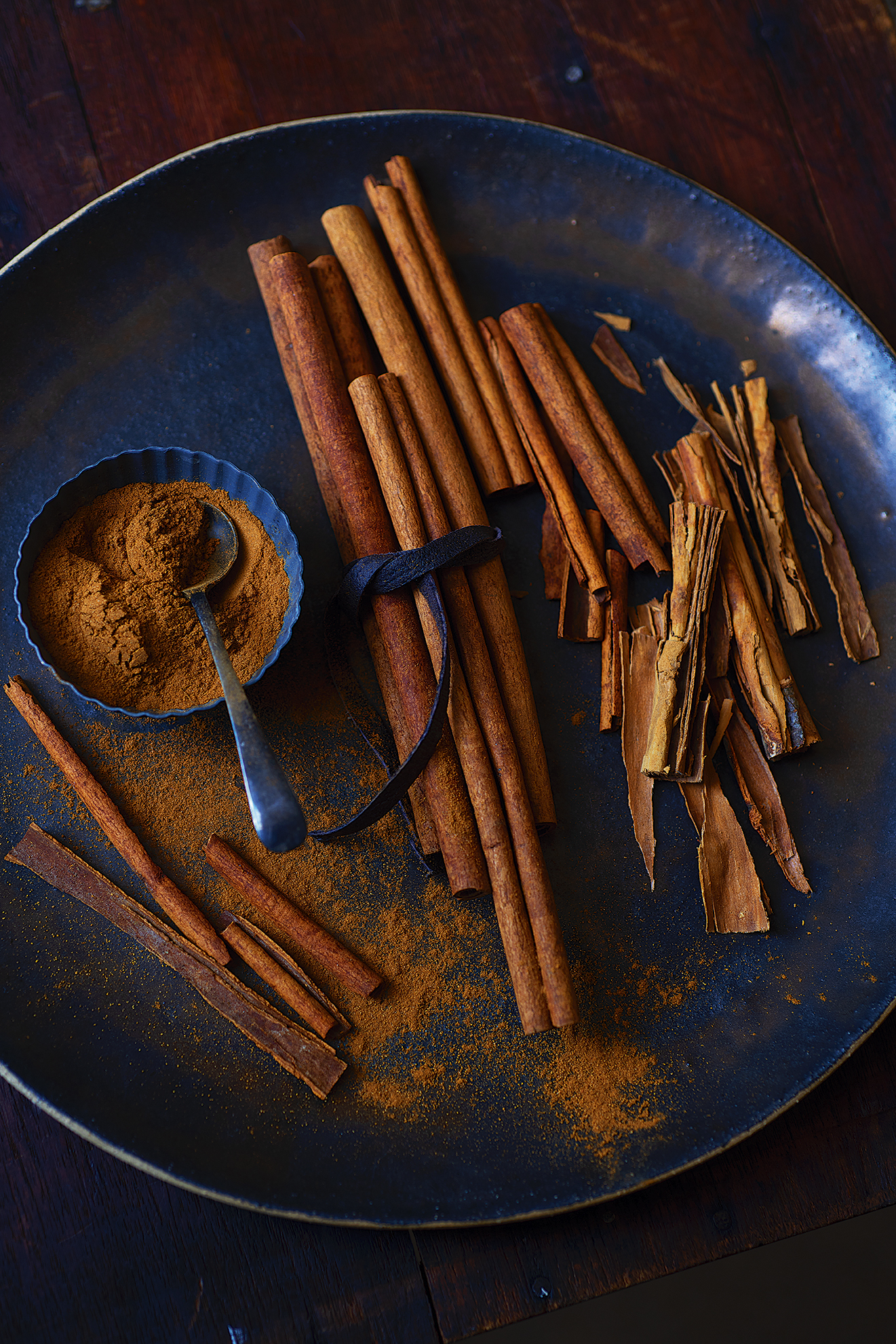
Recipes
Get Premium access to all the latest content online
Subscribe and view full print editions online... Subscribe

